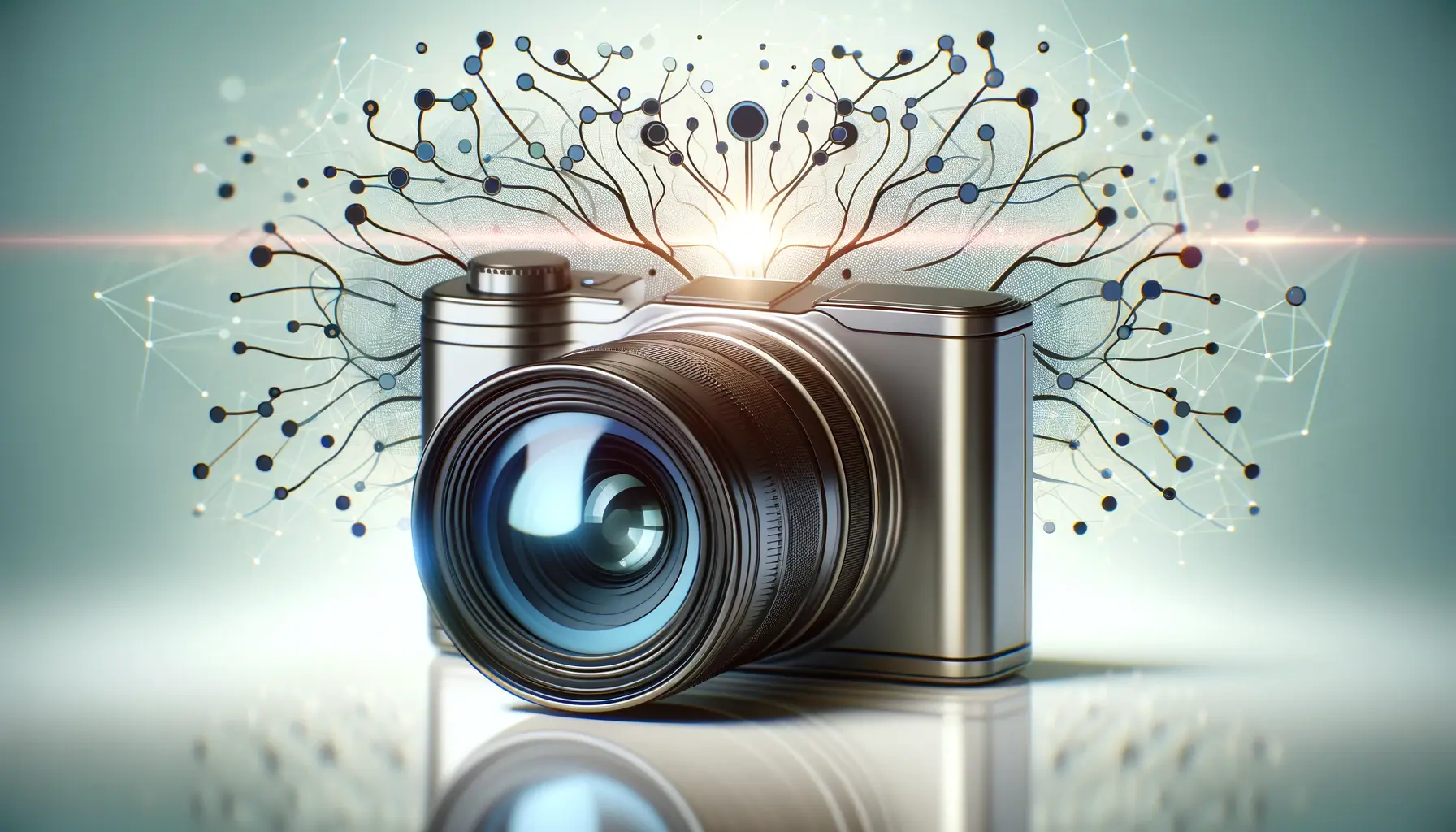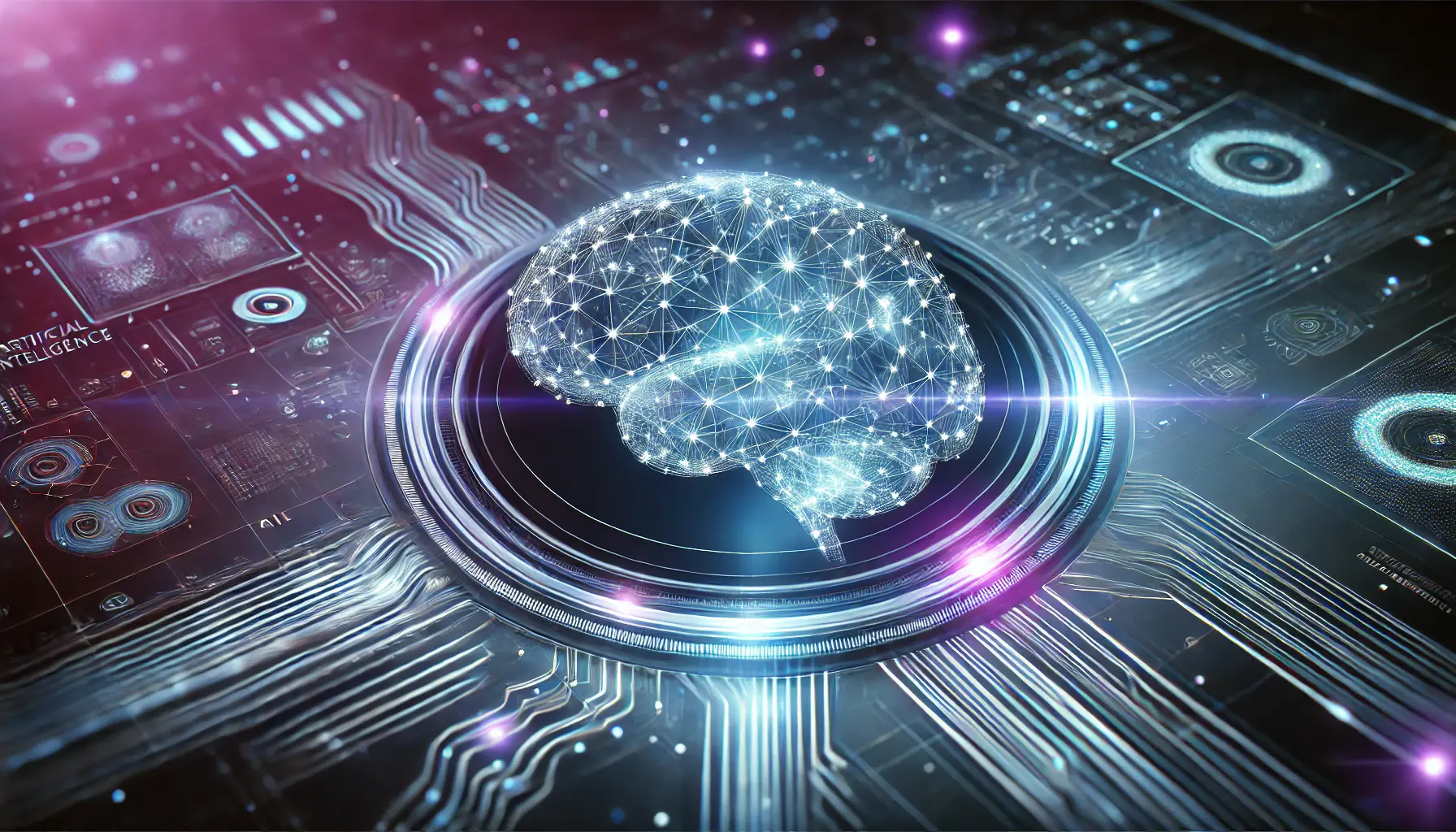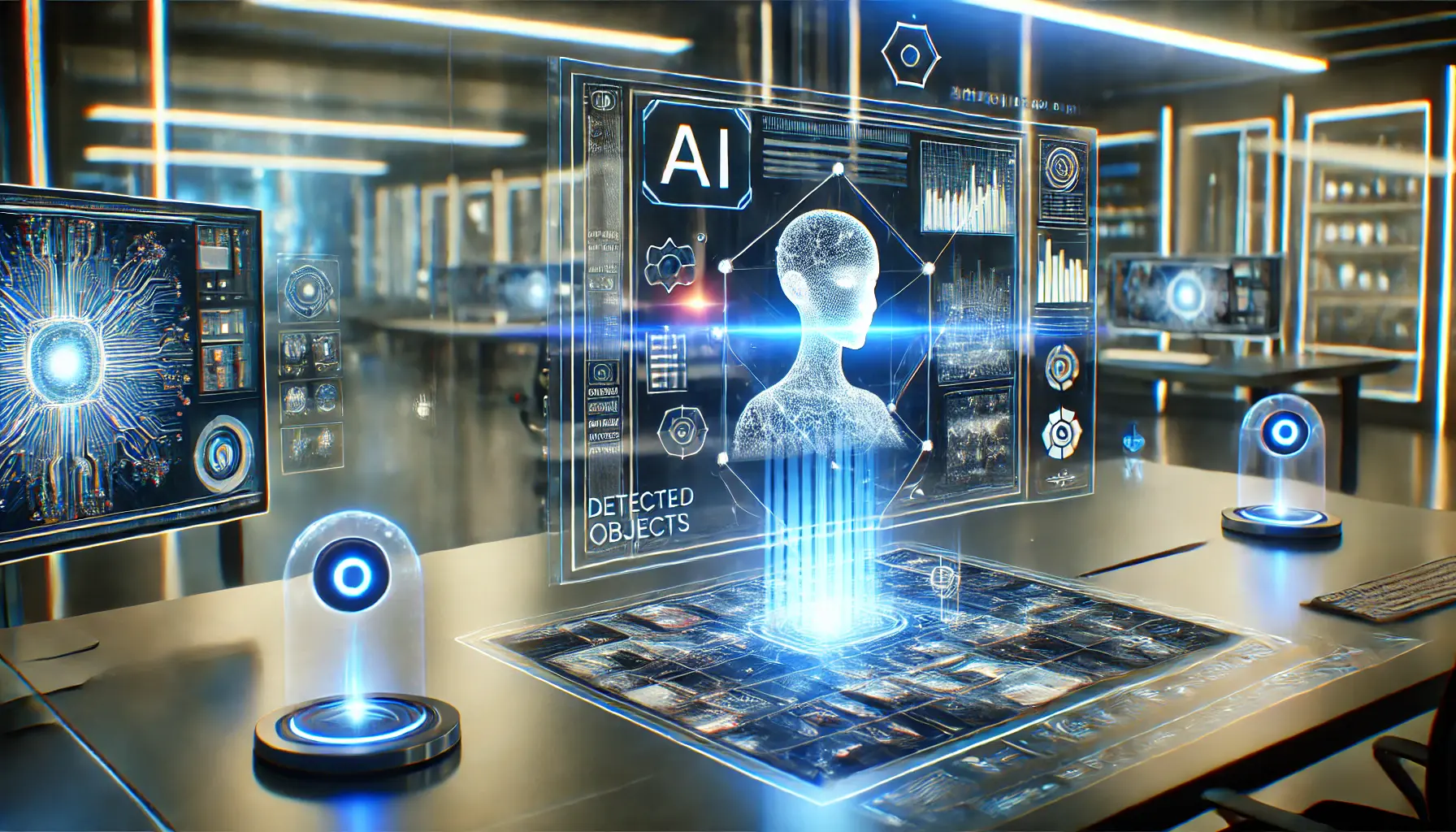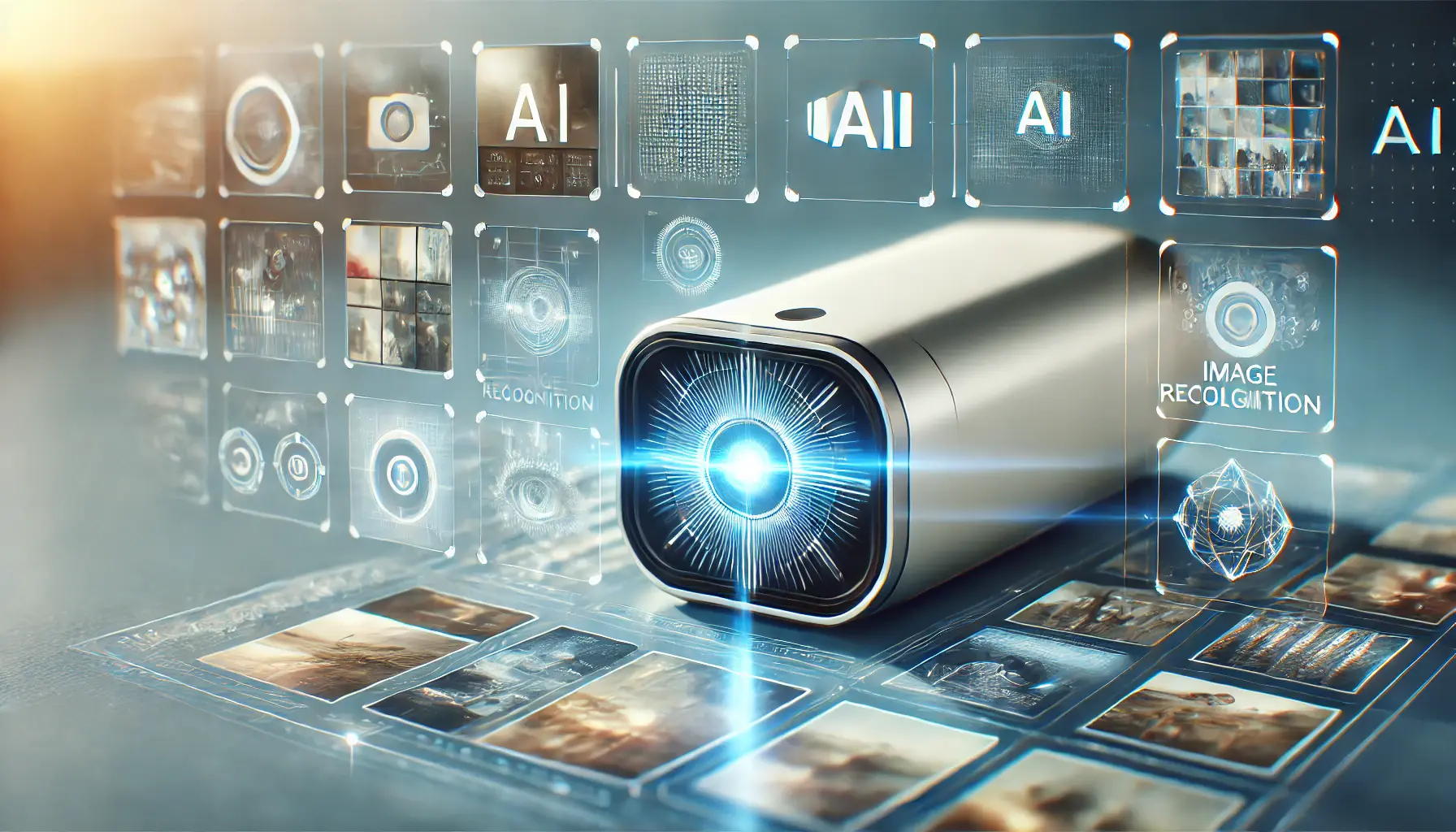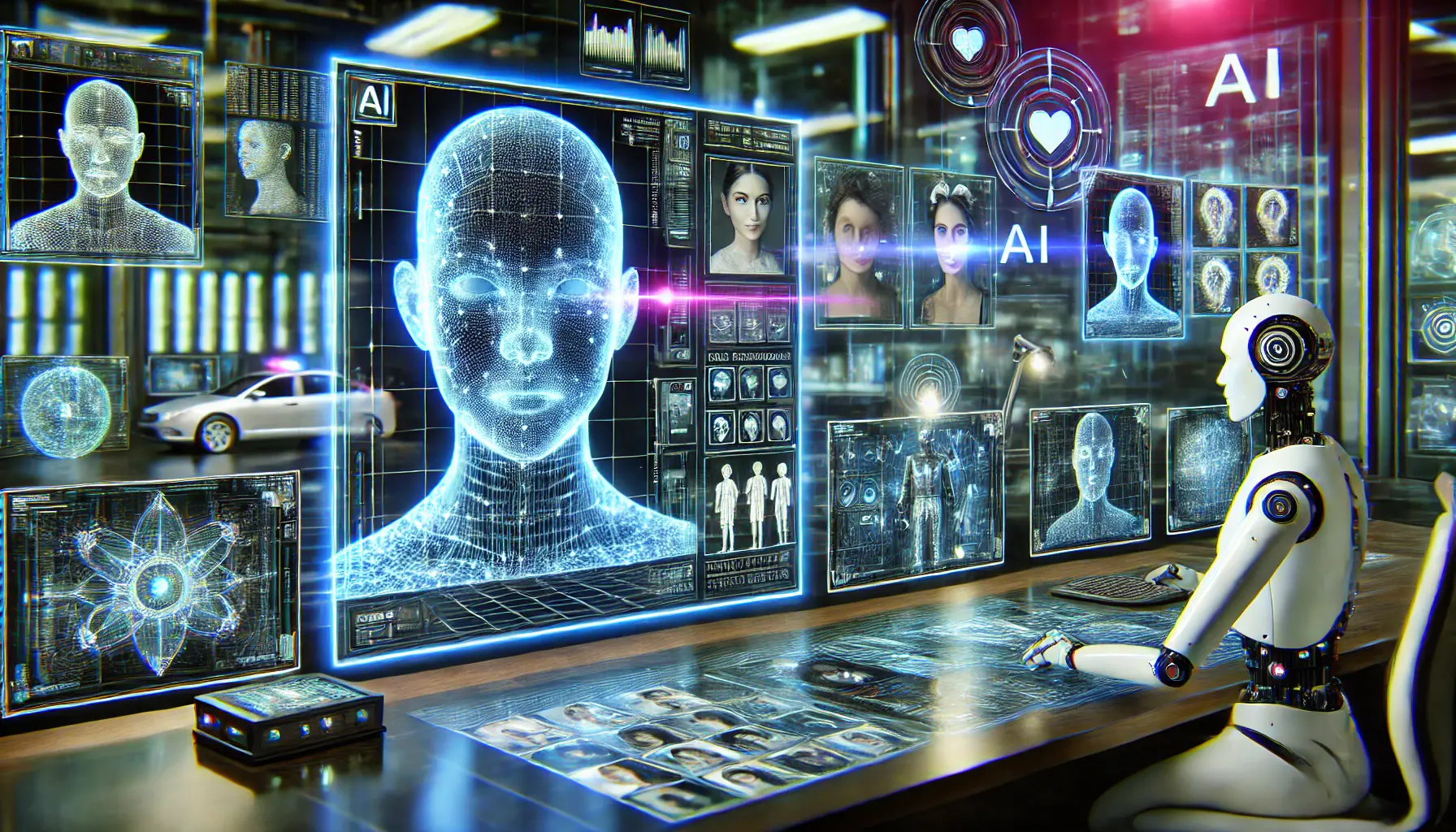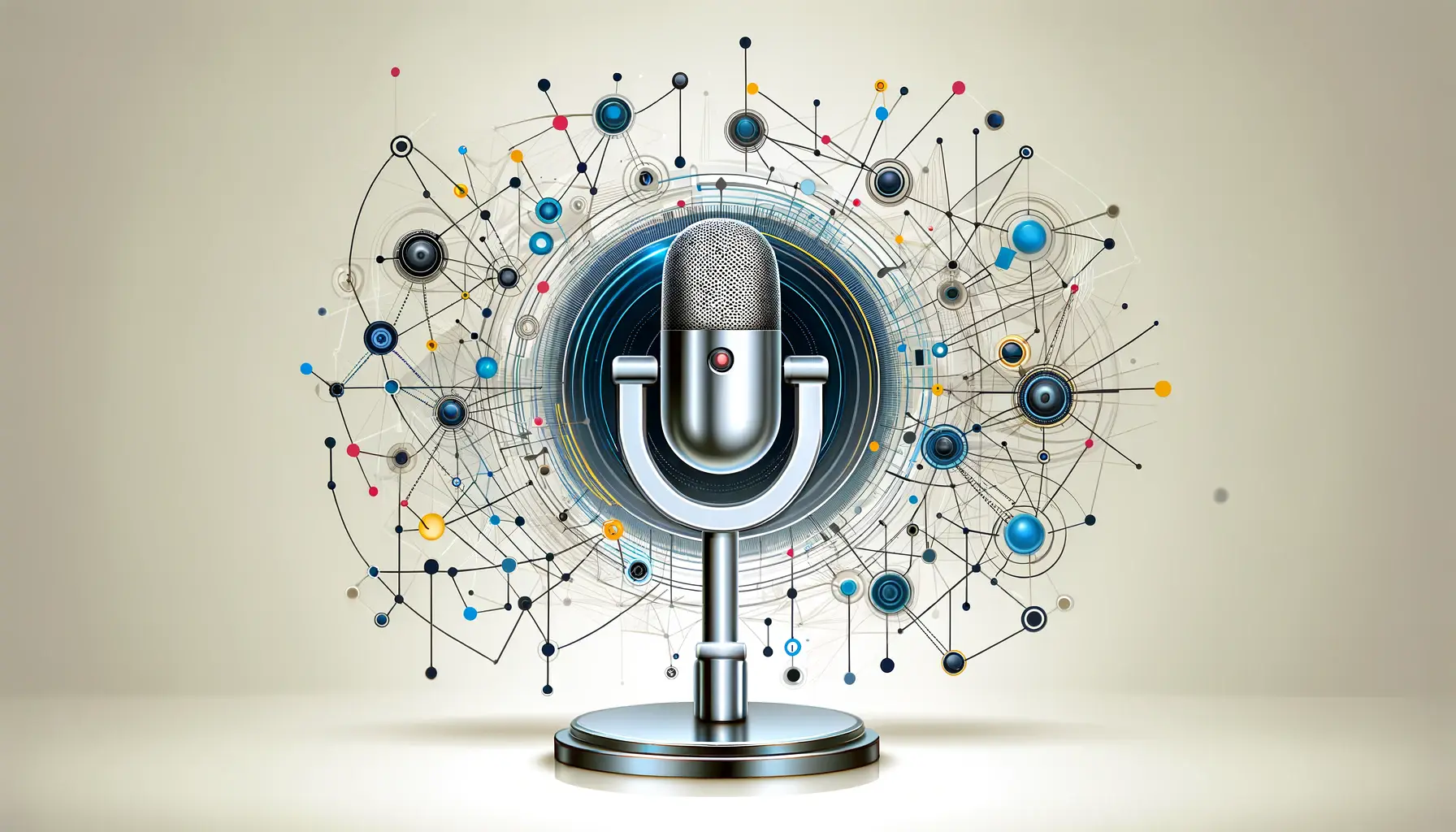The advent of ChatGPT 4 has marked a significant milestone in the evolution of artificial intelligence, particularly in the realm of image recognition.
This advanced iteration of the ChatGPT series by OpenAI has been designed to not only understand and generate human-like text but also to interpret and analyze images with remarkable accuracy.
The integration of image recognition capabilities into ChatGPT 4 opens up a plethora of applications, ranging from enhancing user interactions to providing solutions for complex visual data analysis tasks.
Image recognition, a subset of computer vision, involves the identification and classification of objects, people, places, and actions within images.
ChatGPT 4 leverages state-of-the-art machine learning algorithms to process and understand images at a level that was previously achievable only by human perception.
This breakthrough technology is poised to revolutionize how we interact with AI, making it more intuitive and aligned with how humans perceive the world.
The following article delves into the intricacies of ChatGPT 4’s image recognition features, exploring its capabilities, applications, and the underlying technology that makes it possible.
- Understanding ChatGPT 4’s Image Recognition
- Technological Foundations of Image Recognition
- Enhancing User Experience with Image Recognition
- Challenges and Solutions in Image Recognition
- Future Directions of Image Recognition in AI
- Integrating Image Recognition with Other AI Technologies
- Best Practices for Implementing Image Recognition
- Embracing the Future with ChatGPT 4 Image Recognition
- FAQs on ChatGPT 4 Image Recognition
Understanding ChatGPT 4’s Image Recognition
At the core of ChatGPT 4’s image recognition capability is a sophisticated neural network architecture that has been trained on a vast dataset of images and text.
This training enables the model to identify patterns, shapes, colors, and contextual clues from visual inputs, allowing it to recognize and describe images with a high degree of accuracy.
The process involves several layers of analysis, from basic feature detection to complex scene understanding, enabling ChatGPT 4 to interpret images in a way that mimics human cognitive processes.
The technology behind ChatGPT 4’s image recognition feature is built upon the advancements in deep learning and neural network optimization.
By integrating convolutional neural networks (CNNs) with transformer-based models, ChatGPT 4 achieves a synergistic effect that enhances its ability to process and understand both text and image data.
This integration allows for a more holistic understanding of content, where the AI can draw connections between visual elements and textual information, leading to more accurate and contextually relevant outputs.
Applications of Image Recognition in ChatGPT 4
The image recognition capabilities of ChatGPT 4 find applications in a wide range of fields, from accessibility services to content creation and beyond.
For instance, visually impaired users can benefit from ChatGPT 4’s ability to describe images, providing them with a verbal representation of visual content.
This feature not only enhances accessibility but also enriches the user experience by bridging the gap between visual and textual information.
In the realm of digital marketing and content creation, ChatGPT 4’s image recognition can automate the generation of descriptive captions for images, making content more engaging and searchable.
Additionally, its ability to analyze and interpret images can assist in content moderation by identifying inappropriate or copyrighted material, thereby helping maintain the integrity of online platforms.
The integration of image recognition into ChatGPT 4 represents a significant leap forward in making AI interactions more natural and intuitive, closely mirroring human perception and understanding.
Technological Foundations of Image Recognition
The technological underpinnings of ChatGPT 4’s image recognition capabilities are both complex and fascinating.
Central to its success is the harmonious integration of convolutional neural networks (CNNs) with transformer models, a combination that has set new standards in the field of artificial intelligence.
CNNs are renowned for their proficiency in handling image data, making them an ideal choice for the initial stages of image processing in ChatGPT 4.
Transformers, on the other hand, excel in managing sequential data, making them perfect for interpreting the contextual relationships within images.
When these two technologies are combined, they enable ChatGPT 4 to not only recognize individual elements within an image but also understand the broader context and how elements relate to each other.
This section explores the key components and processes that enable ChatGPT 4 to achieve its remarkable image recognition capabilities.
Key Components of ChatGPT 4’s Image Recognition
- Convolutional Neural Networks (CNNs): At the heart of image processing, CNNs are used to detect and identify patterns, shapes, and textures within images. They are adept at reducing the complexity of images while preserving the critical features necessary for recognition.
- Transformers: These models process the outputs from CNNs to understand the context and relationships between different elements in an image. They are crucial for generating coherent and contextually relevant descriptions of images.
- Training Data: ChatGPT 4’s image recognition is powered by extensive training on diverse datasets comprising millions of images and text descriptions. This vast dataset enables the model to learn a wide range of visual concepts and their textual descriptors.
Process of Image Recognition in ChatGPT 4
- Image Preprocessing: Images are first processed to normalize their size and format, making them suitable for analysis by the neural network.
- Feature Extraction: CNNs analyze the preprocessed images to identify and extract key features such as edges, colors, and shapes.
- Contextual Analysis: The extracted features are then passed to the transformer model, which assesses the relationships and context of the identified features within the image.
- Image Description Generation: Based on the analysis, ChatGPT 4 generates a descriptive text of the image, accurately reflecting its content and context.
The seamless integration of CNNs and transformers in ChatGPT 4 not only enhances its image recognition accuracy but also its ability to generate detailed and context-aware descriptions of images, setting a new benchmark in AI-driven image analysis.
Enhancing User Experience with Image Recognition
ChatGPT 4’s image recognition capabilities significantly enhance user experience across various platforms and applications.
By enabling machines to see and understand images as humans do, it opens up new avenues for interaction and accessibility that were previously unattainable.
This section delves into how image recognition in ChatGPT 4 is being utilized to create more engaging, intuitive, and accessible user experiences.
The ability to analyze and interpret images allows ChatGPT 4 to assist users in a variety of tasks, from simple image descriptions to complex problem-solving scenarios.
This versatility not only makes technology more user-friendly but also more inclusive, catering to the needs of a diverse user base.
Below, we explore specific areas where ChatGPT 4’s image recognition is making a significant impact.
Accessibility and Assistance
- Visual Aid for the Visually Impaired: By providing descriptive narratives of images, ChatGPT 4 helps visually impaired users understand visual content, thereby enhancing their digital navigation and experience.
- Real-time Assistance: Image recognition enables real-time assistance for users in various tasks, such as identifying objects or navigating unfamiliar environments, making daily activities more accessible.
Education and Learning
- Interactive Learning Tools: ChatGPT 4 can be used to create interactive educational content, where students learn through images and their descriptions, fostering a more engaging learning environment.
- Language Learning: By describing images in different languages, ChatGPT 4 aids in language learning, allowing users to expand their vocabulary and comprehension through visual cues.
Content Creation and Management
- Automated Image Captioning: Content creators can leverage ChatGPT 4’s image recognition for generating descriptive captions for images, enhancing the accessibility and SEO of their content.
- Content Moderation: Platforms can use ChatGPT 4 to identify and filter out inappropriate or copyrighted images, ensuring a safe and respectful online environment.
The integration of image recognition into ChatGPT 4 not only advances the capabilities of AI but also democratizes access to information, making digital content more accessible and engaging for all users.
Challenges and Solutions in Image Recognition
The integration of image recognition into ChatGPT 4, while revolutionary, is not without its challenges.
These hurdles range from technical limitations to ethical concerns, each requiring careful consideration and innovative solutions.
Understanding these challenges is crucial for the continued development and responsible deployment of AI technologies that are both powerful and trustworthy.
Despite the impressive capabilities of ChatGPT 4’s image recognition, developers and users alike must navigate these complexities to harness its full potential responsibly.
Below, we discuss some of the primary challenges associated with image recognition technology and the strategies employed to address them.
Accuracy and Reliability
- Challenge: Ensuring high accuracy and reliability in image recognition, especially in complex or ambiguous scenarios, remains a significant challenge.
- Solution: Continuous training on diverse and extensive datasets, coupled with advancements in neural network architectures, helps improve the model’s accuracy and reliability over time.
Data Privacy and Security
- Challenge: The use of personal or sensitive images raises concerns about data privacy and security.
- Solution: Implementing strict data handling policies and employing encryption and anonymization techniques can help protect user privacy and secure data.
Contextual Understanding
- Challenge: Achieving a deep contextual understanding of images, akin to human perception, is challenging for AI models.
- Solution: Integrating multimodal learning approaches, where the AI is trained on both visual and textual data, enhances its ability to grasp context and nuances within images.
Ethical Considerations
- Challenge: Ensuring the ethical use of image recognition technology, including biases and the potential for misuse, is a critical concern.
- Solution: Developing ethical guidelines and conducting regular audits of AI models can help mitigate biases and prevent misuse, ensuring the technology is used for beneficial purposes.
Addressing these challenges is essential for the advancement of image recognition technology in a way that is both ethical and effective, ensuring that it serves as a tool for positive change and innovation.
Future Directions of Image Recognition in AI
The field of image recognition within artificial intelligence is rapidly evolving, with new breakthroughs and applications emerging at an unprecedented pace.
As we look to the future, several trends and developments promise to further expand the capabilities and impact of image recognition technologies like those found in ChatGPT 4.
This forward-looking perspective not only highlights the potential of AI to transform various sectors but also underscores the importance of responsible innovation.
In this section, we explore potential future directions for image recognition in AI, focusing on how these advancements could shape our interaction with technology, enhance our capabilities, and address some of the world’s most pressing challenges.
Integration with Augmented Reality (AR) and Virtual Reality (VR)
- Enhanced Real-World Interactions: Combining image recognition with AR and VR technologies could lead to more immersive and interactive experiences, from education to entertainment and beyond.
- Practical Applications: This integration can significantly benefit fields such as medicine, where AR and VR, powered by image recognition, could provide surgeons with real-time, image-based insights during procedures.
Advancements in Autonomous Systems
- Smarter Autonomous Vehicles: Future developments in image recognition will be crucial for improving the safety and efficiency of autonomous vehicles, enabling them to better understand and navigate their environments.
- Robotic Automation: Image recognition can enhance the capabilities of robots in manufacturing, logistics, and even domestic settings, allowing them to perform tasks with greater precision and autonomy.
Improving Environmental Conservation
- Wildlife Monitoring: Image recognition can play a pivotal role in conservation efforts, enabling the monitoring of wildlife populations and habitats with minimal human intervention.
- Climate Change Research: By analyzing satellite images, AI can help scientists track changes in ecosystems and climate patterns, contributing valuable data for research and policy-making.
Personalized Healthcare
- Diagnostic Tools: Image recognition technologies could revolutionize diagnostic processes, enabling the early detection of diseases through the analysis of medical images.
- Customized Treatment Plans: By understanding patient-specific data, AI can assist in developing personalized treatment plans, improving outcomes and patient care.
The future of image recognition in AI holds immense promise, offering innovative solutions to complex problems and enhancing human capabilities in ways previously unimaginable. As we venture into this future, the focus must remain on harnessing these technologies responsibly, ensuring they serve the greater good.
Integrating Image Recognition with Other AI Technologies
The potential of image recognition is magnified when integrated with other artificial intelligence technologies.
This synergy not only enhances the capabilities of AI systems but also opens up new possibilities for innovation and application across various domains.
By combining image recognition with technologies like natural language processing (NLP), machine learning (ML), and the Internet of Things (IoT), AI can achieve a more comprehensive understanding of the world, leading to smarter, more intuitive applications.
This section explores how the integration of image recognition with other AI technologies is paving the way for advanced applications and systems that can better understand, interact with, and respond to their environments.
Combining Image Recognition and Natural Language Processing
- Enhanced Content Discovery: The combination of image recognition and NLP allows for more sophisticated search and discovery tools, enabling users to find information using both text and images, thereby improving accuracy and relevance.
- Improved Accessibility: This integration can significantly enhance accessibility features, such as providing descriptive audio for images in various languages, making digital content more accessible to people worldwide.
Image Recognition and Machine Learning
- Adaptive Learning Systems: By incorporating ML algorithms, image recognition systems can continuously learn and adapt from new data, improving their accuracy and functionality over time.
- Predictive Analytics: Integrating image recognition with ML enables predictive analytics in sectors like retail, where it can forecast trends and preferences based on visual data analysis.
Image Recognition in the Internet of Things (IoT)
- Smart Home Devices: Image recognition can enhance the functionality of IoT devices in smart homes, enabling features such as security monitoring and automation based on visual cues.
- Industrial Automation: In industrial settings, combining IoT with image recognition can lead to more efficient monitoring and maintenance processes, reducing downtime and increasing productivity.
The integration of image recognition with other AI technologies represents a significant step forward in creating more intelligent, responsive, and useful AI systems. As these technologies continue to evolve and converge, the possibilities for innovation and application seem limitless, promising a future where AI can more effectively serve and enhance human life.
Best Practices for Implementing Image Recognition
Implementing image recognition technology effectively requires adherence to a set of best practices.
These guidelines ensure that the technology not only performs optimally but also respects privacy, security, and ethical standards.
As organizations and developers look to integrate ChatGPT 4’s image recognition features into their applications, understanding these best practices is crucial for success.
This section outlines essential considerations and strategies for deploying image recognition technologies, focusing on maximizing their benefits while mitigating potential risks and challenges.
Ensuring Data Privacy and Security
- Secure Data Handling: Implement robust data protection measures to safeguard user data, including encryption and secure data storage practices.
- Privacy by Design: Incorporate privacy considerations into the development process, ensuring that user consent is obtained for data collection and processing.
Maintaining Accuracy and Reliability
- Diverse Training Data: Use a wide-ranging and inclusive dataset for training image recognition models to improve accuracy and reduce biases.
- Continuous Testing and Updates: Regularly test and update the AI models to adapt to new data and evolving real-world conditions, ensuring sustained performance over time.
Addressing Ethical Considerations
- Ethical AI Frameworks: Develop and adhere to ethical guidelines for AI development and use, focusing on fairness, accountability, and transparency.
- Impact Assessment: Conduct regular assessments of the technology’s impact on society and individuals, adjusting practices as necessary to ensure positive outcomes.
Enhancing User Experience
- User-Centric Design: Design interfaces and interactions that are intuitive and user-friendly, making the benefits of image recognition technology accessible to all users.
- Feedback Mechanisms: Implement feedback systems to gather user input on the technology’s performance and usability, informing continuous improvement.
Adhering to these best practices is essential for harnessing the full potential of image recognition technology in a way that is ethical, effective, and user-friendly. By prioritizing privacy, security, accuracy, and ethical considerations, developers and organizations can create AI applications that not only innovate but also respect and enhance the user experience.
Embracing the Future with ChatGPT 4 Image Recognition
The journey through the capabilities, applications, challenges, and future directions of ChatGPT 4’s image recognition features reveals a landscape rich with potential and fraught with responsibility.
As we stand on the brink of a new era in artificial intelligence, the integration of image recognition into ChatGPT 4 not only showcases the remarkable advancements in AI but also highlights the need for ethical, secure, and user-focused implementation.
This conclusion aims to encapsulate the essence of our exploration, offering insights into the transformative power of image recognition technology.
The Transformative Power of Image Recognition
ChatGPT 4’s image recognition capabilities represent a significant leap forward in making AI more intuitive and aligned with human perception.
By enabling machines to understand and interpret visual data, this technology opens up new avenues for innovation across various sectors, including healthcare, education, environmental conservation, and more.
The ability to process and analyze images with high accuracy and context-awareness paves the way for applications that were once considered futuristic, from augmented reality experiences to autonomous systems that can navigate and interact with the world around them.
Navigating Challenges with Responsibility
However, the advancement of image recognition technology also brings to light the challenges of accuracy, privacy, security, and ethical considerations.
Addressing these challenges requires a concerted effort from developers, policymakers, and users alike.
By adhering to best practices for data privacy, continuously improving the technology, and ensuring its ethical use, we can mitigate potential risks and ensure that image recognition serves as a force for good.
Looking Ahead: A Future Shaped by Image Recognition
- The integration of image recognition with other AI technologies, such as natural language processing and the Internet of Things, hints at a future where AI systems offer more holistic and nuanced understandings of the world.
- As image recognition technology continues to evolve, its potential to address global challenges and improve human life becomes increasingly apparent. From enhancing healthcare diagnostics to monitoring environmental changes, the applications of image recognition are vast and varied.
- The emphasis on ethical AI development and the implementation of best practices will be crucial in ensuring that the benefits of image recognition are realized in a way that respects privacy, security, and societal values.
In conclusion, ChatGPT 4’s image recognition features stand as a testament to the incredible strides made in artificial intelligence.
As we move forward, the focus must remain on harnessing this technology responsibly, ensuring it enhances human capabilities and addresses the needs of society.
The future of AI, shaped by image recognition and other advanced technologies, holds the promise of a world where machines not only see but understand and interact with the world in harmony with human values and aspirations.
FAQs on ChatGPT 4 Image Recognition
Explore commonly asked questions about ChatGPT 4’s image recognition capabilities to better understand how it works and how you can utilize it effectively.
ChatGPT 4 uses advanced neural networks to analyze images, identifying patterns, objects, and contexts within them to generate relevant responses.
Yes, ChatGPT 4 can describe a wide range of images, but its accuracy depends on the clarity and content of the image provided.
While highly advanced, it may struggle with extremely complex images or those with minimal contextual information.
No, image recognition is a feature specific to ChatGPT 4 and later versions, integrating more advanced AI capabilities.
Providing clear, high-quality images and specific prompts can significantly enhance the accuracy of ChatGPT 4’s image recognition.
ChatGPT 4 is designed to respect privacy, so it avoids generating responses that could reveal personal information from images.
It offers descriptive analysis of images, aiding visually impaired users by providing verbal descriptions of visual content.
Yes, ethical considerations include privacy, consent for image use, and the potential for bias in how images are interpreted.
